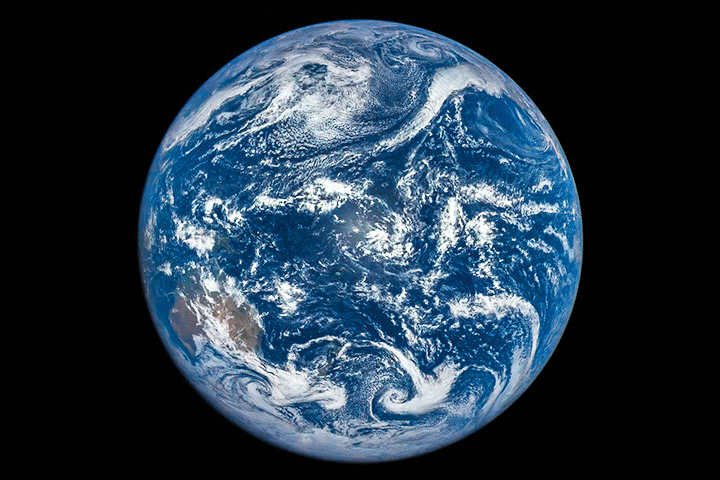
EarthSky’s once-a-year fundraiser going on now. Please donate to help us keep going!
A camera aboard the DSCOVR satellite captured a unique view of this week’s solar eclipse. On March 9, 2016, residents of the Western Pacific looked up in the early morning hours to observe the only total solar eclipse of 2016, while DSCOVR looked down from a million miles away and captured the shadow of the moon crossing the planet.
In the animation above, the shadow of the new moon starts crossing the Indian Ocean and marches past Indonesia and Australia into the open waters and islands of Oceania (Melanesia, Micronesia, and Polynesia) and the Pacific Ocean. Note how the shadow moves in the same direction as Earth rotates. The bright spot in the center of each disk is sunglint — the reflection of sunlight directly back at the satellite’s camera.
NOAA’s DSCOVR satellite is the Nation’s first operational satellite in deep space. DSCOVR hovers between the sun and Earth at all times, maintaining a constant view of the sun and sun-lit side of Earth.
Adam Szabo is NASA’s project scientist for DSCOVR. He said:
What is unique for us is that being near the sun-Earth line, we follow the complete passage of the lunar shadow from one edge of the Earth to the other. A geosynchronous satellite would have to be lucky to have the middle of an eclipse at noon local time for it. I am not aware of anybody ever capturing the full eclipse in one set of images or video.
The animation above was assembled from 13 images acquired on March 9, 2016, by NASA’s Earth Polychromatic Imaging Camera (EPIC), a four-megapixel charge-coupled device (CCD) and Cassegrain telescope on the DSCOVR satellite.
Japan’s Himawari-8 satellite also captured a series of images showing the procession of the shadow during this eclipse, which you can view here.
Enjoying EarthSky? Sign up for our free daily newsletter today!
Bottom line: On March 9, 2016, a camera aboard the DSCOVR satellite captured the shadow of the moon crossing Earth from a million miles away during the only total solar eclipse of 2016.











